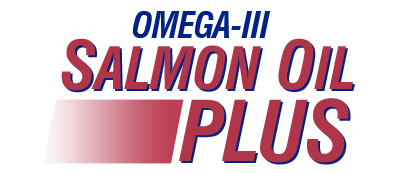Foods Containing Omega 3 Fatty Acids
Foods containing omega 3 fatty acids are vitally important.
Almost weekly new scientific research is published looking at the extraordinary health benefits of these amazing polyunsaturated fatty acids (PUFA) and the foods containing omega 3 fatty acids.
For example, research is suggesting the possibility that the omega 3 fatty acids DHA (docosahexaenoic acid), EPA (eicosapentaenoic acid) and DPA (docosapentaenoic acid) may help to both prevent and relieve a whole host of serious health problems.
Here are just a few of the health conditions researchers are looking at: heart disease, stroke, diabetes, arthritis, cancer, emphysema, asthma, ADHD and depression. So if there’s a possibility that foods containing omega 3 fatty acids may be beneficial for these conditions, it would be safe to assume that you should include these foods in your diet. However, there are some things you need to know first.
Let’s start with the four main omega 3 fatty acids found in food – DHA, EPA, DPA and ALA (alpha-lenolenic acid). While ALA is an essential fatty acid and vitally important, it’s only one of 8 different omega 3 fatty acids that are found in foods.
And most all of the breakthrough research discoveries have been related to the extraordinary benefits and anti-inflammatory properties of DHA, EPA and DPA, found primarily in salmon and other fatty fish.
While ALA, found mainly in plant foods, is beneficial, it’s not nearly as powerful an anti-inflammatory agent as DHA, EPA and DPA.
Although ALA can be converted in the human body into small amounts of EPA, the latest state-of-the-art science shows this conversion is a very difficult, complex process. Even under ideal health and digestive conditions, only about 2% of ALA is ever converted into EPA – and almost none to DHA and DPA.
So, if you want to get maximum results from the omega 3 PUFAs, especially DHA, EPA and DPA, proven by research to be so highly beneficial to people’s health, then you need to turn to fish.
Without a doubt, oily cold-water fish and high quality pure fish oil supplements are your best source of PUFAs.
One or two servings a week of oily fish will give you the minimum amounts of omega 3. But more servings of fish, plus a daily fish oil supplement will bring your body closer to optimum omega 3 levels.
Your best, most complete omega 3 foods containing DHA, EPA and DPA are salmon, tuna, sardines, anchovies, herring and mackerel.
Good food sources of plant based ALA are walnuts, soy beans and tofu. Cruciferous vegetables, such as cauliflower, broccoli and Brussels sprouts, are also good sources.
Although flaxseed oil is marketed as a source of ALA, it’s not a traditional food for humans and is considered unnatural as a human source by many scientists. Flax has traditionally been known as linseed oil and used in paints and as a furniture polish.
Flax oil is a cheap, unstable source and was never marketed until research on fish oil PUFAs brought the amazing health benefits into the news and created a market for slick advertisers to step into.
To get all the benefits of omega 3 fatty acids, your best bet is to stick with broiled salmon, steamed broccoli and Salmon Oil Plus – the best fish oil supplement available.
Our Guarantee – We offer a 100% money-back guarantee, no questions asked.
Simply return the original bottle for an exchange or full refund.
Would You Like More Information?
Call us toll-free at (888) 508-1234 to order today or Order Online

HWW Enterprise Group
353 Carolina Mtn. Dr. #188
Franklin, NC 28734
Email: bewell@havegoodhealth.net



